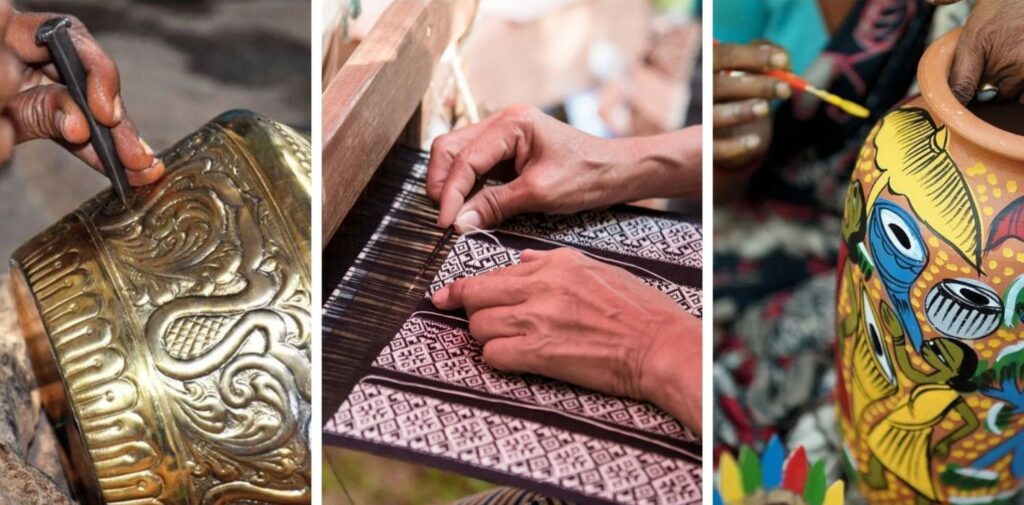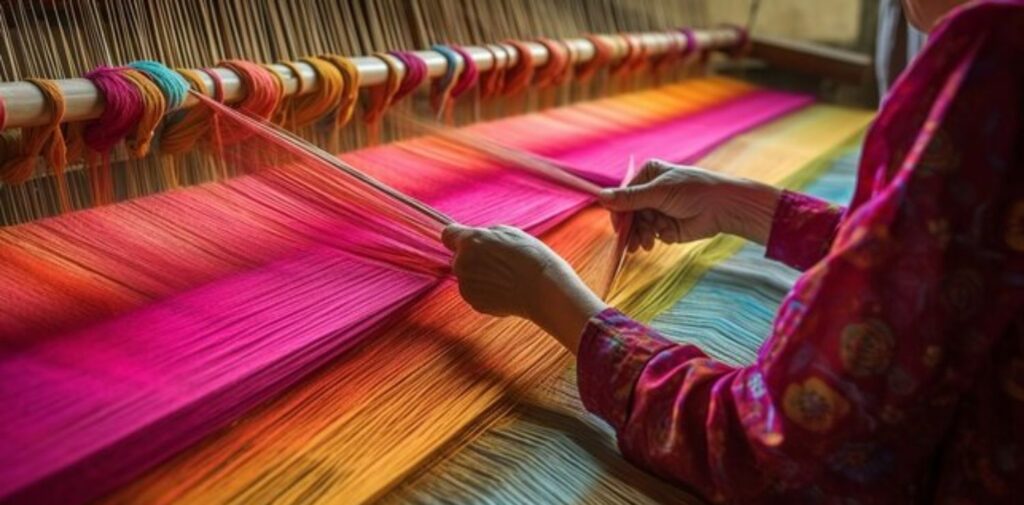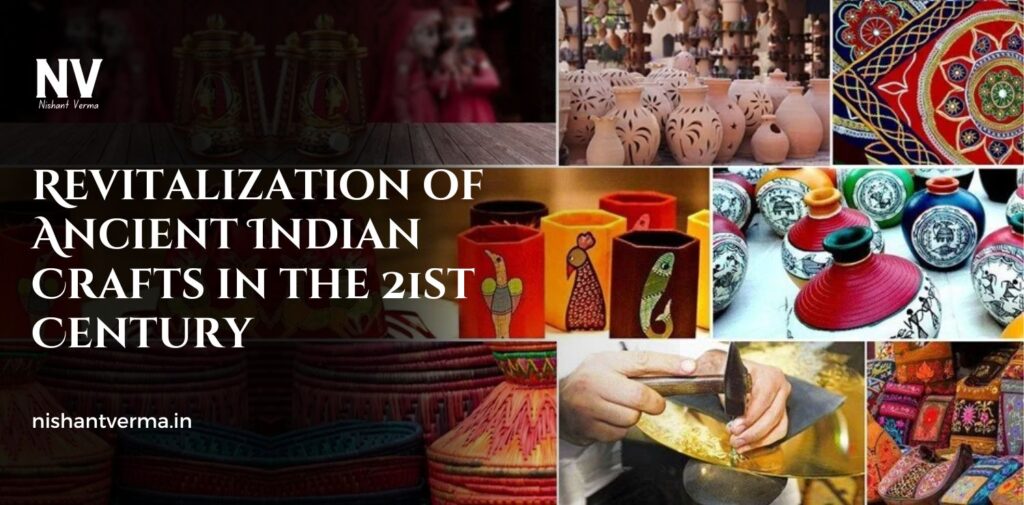India, with its rich cultural history, has been home to a variety of ancient crafts that date back thousands of years. These crafts are not just art forms but an embodiment of the country’s traditions, values, and craftsmanship. However, with the advent of industrialization and modern technologies, many of these crafts faced the risk of fading away. Fortunately, in recent decades, there has been a strong movement towards revitalizing and preserving India’s ancient crafts. This article explores how these traditional arts are being rejuvenated in the 21st century, the role of government and private initiatives, and how they are contributing to both cultural and economic growth.
1. The Importance of Ancient Indian Crafts
Ancient Indian crafts are an essential part of India’s cultural heritage. From the intricate designs of Indian textiles like handwoven sarees to the beautiful stone carvings and pottery, these crafts tell the story of India’s rich artistic traditions. For centuries, artisans passed down their skills through generations, keeping cultural practices alive.
A. Cultural Identity and Heritage
Each craft has a unique story and ties to the region it comes from, carrying centuries of history. Whether it’s the traditional Madhubani painting from Bihar or the famous Kashmiri Pashmina shawls, these crafts reflect the local cultures, stories, and religious practices of India. They represent an important way of connecting with India’s roots and keeping cultural identity intact.
B. Skill and Craftsmanship
The crafts represent the skills of artisans who dedicate their lives to perfecting these intricate techniques. The attention to detail and precision involved in handcrafts is something that mass production often cannot replicate, making them special and valuable.

2. Challenges Faced by Ancient Crafts
Despite their cultural significance, ancient crafts in India have faced several challenges, especially in the modern era. Globalization, industrialization, and changing consumer preferences have all played a role in this decline.
A. Industrialization and Mass Production
The rise of factories and mass production led to the spread of cheaper, machine-made alternatives. As a result, handmade crafts, which were time-consuming and expensive to produce, began to lose their appeal. Consumers started opting for ready-made, affordable products, which posed a threat to the survival of these ancient crafts.
B. Lack of Market Access
Many traditional crafts were practised in rural areas with little access to modern markets. The lack of infrastructure, poor marketing strategies, and limited exposure made it difficult for artisans to sell their products on a larger scale. As a result, many crafts, especially those made by small, rural artisans, faced the risk of fading out.
C. Loss of Artisan Communities
Over time, younger generations, often living in urban areas, were less inclined to take up traditional crafts. The hard work, low wages, and lack of recognition led many artisans to leave their ancestral professions and pursue more secure jobs. This shift caused a gradual decline in the knowledge of traditional crafts, threatening their survival.
3. Government and Private Sector Support
To address these challenges, both the Indian government and private organizations have stepped up their efforts to revitalize ancient crafts in the 21st century.
A. Government Initiatives
The Indian government has introduced various programs aimed at promoting traditional crafts. Initiatives like Crafts Villages, Handicrafts Development Corporations, and the National Handloom Development Corporation work to provide a platform for artisans to showcase their work.
Programs such as Geographical Indications (GI) certification have helped artisans protect and promote specific regional crafts, such as the famous Kanchipuram silk sarees or the Banarasi brocades. GI certification ensures that only products made in a specific region by skilled artisans are labelled as such, preventing exploitation and promoting authentic craftsmanship.
B. Skill Development and Training
The government and non-government organizations have also provided skill development programs to help artisans modernize their techniques without losing their traditional touch. Workshops, training, and awareness programs have helped introduce new technology and business practices, making traditional crafts more sustainable in a modern economy.
C. Private Sector Contributions
Private companies, non-profits, and social enterprises have also been at the forefront of promoting ancient crafts. Organizations like Dastkar, Khadi and Village Industries Commission (KVIC), and Crafts Council of India have worked to connect artisans with broader markets, both locally and internationally. These organizations also provide financial aid, business guidance, and marketing support, ensuring that artisans get fair wages for their hard work.

4. The Role of E-commerce and Digital Platforms
With the internet revolution, the rise of e-commerce platforms has created new opportunities for traditional Indian crafts. Websites like Amazon India, Flipkart, and Craftsvilla have allowed artisans to sell their handmade goods to customers around the world.
A. Global Exposure for Local Crafts
Through e-commerce, regional crafts have gained exposure beyond local and national borders. An artisan in a remote village can now sell their products to consumers in different parts of India or even to international buyers. This shift has helped traditional crafts reach a global audience, ensuring that they remain relevant in the 21st century.
B. Social Media for Awareness
Social media platforms like Instagram and Facebook have proven to be powerful tools for promoting crafts. Artisans and businesses are now able to showcase their work to a wider audience. Social media campaigns that highlight the beauty of ancient Indian crafts have sparked renewed interest, particularly among younger generations who are now more likely to appreciate handmade, sustainable products.
5. Fusion of Tradition with Modern Trends
Another significant trend in the revitalization of ancient Indian crafts is the fusion of traditional techniques with modern designs and global trends. This has helped these crafts appeal to a contemporary market while preserving their authenticity.
A. Fashion and Textiles
Indian textile crafts, such as Bandhani, Kalamkari, and Ikat, have found new life in the fashion industry. Designers are blending these traditional techniques with modern silhouettes, making them more accessible and attractive to global consumers. Indian fabrics and garments, once confined to regional markets, are now part of global fashion collections.
B. Home Decor and Modern Interiors
In the home decor market, traditional Indian crafts like Warli paintings, Madhubani art, and Wooden Jharokhas have become popular. Many interior designers and furniture makers are incorporating these elements into contemporary living spaces, bringing a unique, handcrafted touch to modern homes.
By combining traditional craftsmanship with contemporary designs, these crafts have become more marketable to a global audience while keeping their cultural essence intact.

6. The Social Impact of Revitalizing Ancient Crafts
The revival of ancient Indian crafts has not only contributed to the economy but has also had a significant social impact.
A. Empowerment of Artisans
The revitalization of these crafts has created job opportunities and empowered artisans, particularly women and marginalized communities, who have been able to maintain their livelihoods. Artisans are gaining recognition and respect for their work, and some are even able to pass on their craft to the next generation, ensuring its survival.
B. Promoting Sustainable and Ethical Consumerism
Many traditional crafts are eco-friendly and made with sustainable materials. As the world becomes more conscious of environmental issues, products made from ancient Indian crafts are gaining popularity for their ethical production and low carbon footprint. By supporting these crafts, consumers are helping to promote sustainability in the global market.
C. Preserving Cultural Identity
The revival of these crafts helps preserve India’s diverse cultural identity, ensuring that the rich traditions of the past continue to be an integral part of the country’s future. By supporting these crafts, India is also preserving its heritage for future generations, allowing them to stay connected to their roots.
Conclusion
The revitalization of ancient Indian crafts in the 21st century has been a remarkable journey, bringing together tradition and innovation. Through government initiatives, private sector support, e-commerce platforms, and a renewed interest in sustainable fashion and decor, these crafts have found new life in the modern world. More than just a way to preserve India’s heritage, the revival of ancient crafts is also a powerful tool for economic growth, social empowerment, and cultural preservation.
As more people recognize the value of handcrafted, authentic products, the future of these ancient crafts looks promising. By continuing to support and nurture these crafts, India will ensure that its rich artistic traditions continue to thrive for generations to come.




